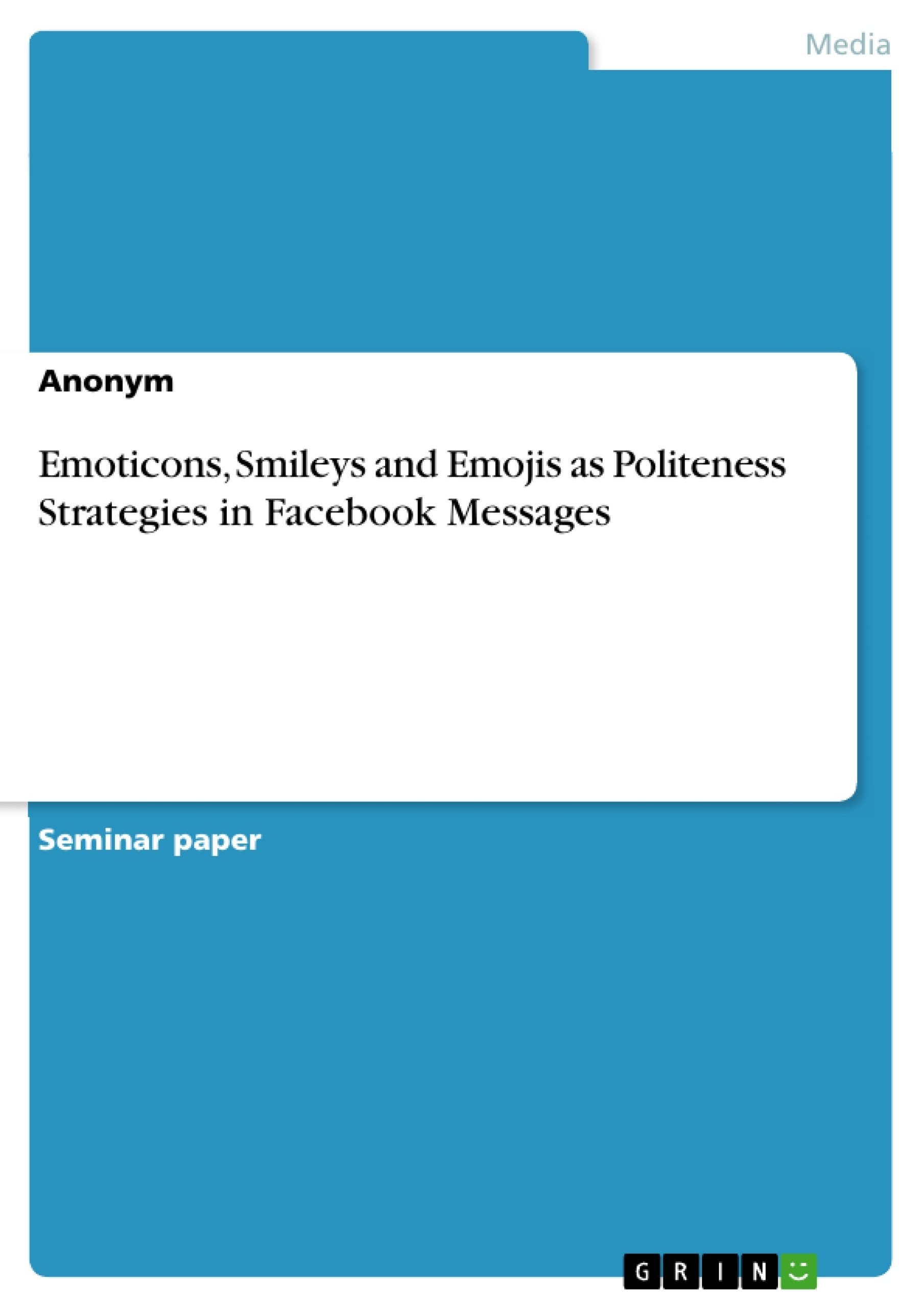Of course, oral conversation is not going to extinct because of the enormous increase of the usage of (online) message services, but nevertheless: many conversations that would have been taken place orally in face-to-face communication before the invention of the Internet, are nowadays often relocated to the medial text layer. Short phone calls or personal chats are decreasing in their frequency in favour of SMS and text messages via WhatsApp and Facebook. When we keep in mind that more and more conversations take place on a textual basis, we come across the question if linguistic theories, like Brown and Levinson's, can be applied to digital conversations as well.
This paper deals with this particular question and will prove that politeness strategies can also be found in written communication. Since it is not possible to transfer facial expressions or gestures of the sender via messages, smileys, emoticons, and emojis are created and they can also act as politeness strategy markers. This term paper will focus on Brown and Levinson's politeness strategies and explain that the principles of their thesis can also be found in Facebook text messages.
Table of Contents
- 1. Introduction
- 2. Data and Methodology
- 2.1 Brown and Levinson's Concept of Politeness
- 2.2 The Data and the Status of Facebook Messages
- 2.3 Differentiation: Emoticons, Smileys and Emojis
- 3. Emoticons, Smileys and Emojis as Politeness Strategies in Facebook Messages
- 3.1 Bald On-Record
- 3.2 Positive Politeness
- 3.3 Negative Politeness
- 3.4 Off-Record
- 4. Conclusion
- 5. References
- 6. Appendix
Objectives and Key Themes
This paper examines the applicability of politeness strategies, specifically those developed by Brown and Levinson, in the context of written communication, particularly Facebook messages. It investigates the role of smileys, emoticons, and emojis in acting as politeness markers and how they contribute to the overall tone and intent of messages.
- The evolution of politeness theories in the digital age
- The function of smileys, emoticons, and emojis as politeness strategies in Facebook messages
- The analysis of Facebook messages through the lens of Brown and Levinson's politeness framework
- The relationship between digital communication and face management
- The significance of graphic elements in conveying politeness and social cues online
Chapter Summaries
The introduction sets the stage by highlighting the increasing reliance on digital communication and its impact on politeness theory. It emphasizes the need to adapt traditional theories to the nuances of written communication, particularly in the context of online platforms like Facebook. This paper aims to demonstrate how smileys, emoticons, and emojis serve as politeness strategies in Facebook messages. The "Data and Methodology" section delves into the theoretical framework, focusing on Brown and Levinson's politeness theory and its key components. It provides a detailed explanation of "face" and its two dimensions: positive and negative face. The chapter also introduces the concept of "Face Threatening Acts" (FTAs) and the five superstrategies used to manage these acts. Additionally, it introduces the terms smiley, emoticon, and emoji, differentiating between them and laying the groundwork for their analysis in the context of Facebook messages. The analysis section examines various authentic Facebook messages to explore how graphic elements, specifically emoticons, function as politeness strategies. It delves into each of Brown and Levinson's politeness strategies, analyzing how they are manifested through the use of emoticons and other graphical elements in Facebook messages.
Keywords
This paper centers on politeness theory, digital communication, Facebook messages, smileys, emoticons, emojis, face management, Face Threatening Acts (FTAs), Brown and Levinson's politeness framework, and the impact of graphic elements on online communication.
- Quote paper
- Anonym (Author), 2015, Emoticons, Smileys and Emojis as Politeness Strategies in Facebook Messages, Munich, GRIN Verlag, https://www.grin.com/document/1392039




